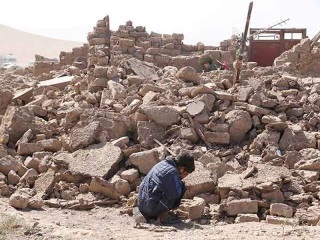On 19 April 2025, earthquake tremors were felt once again in Afghanistan. According to the National Center for Sisamology, the intensity of this earthquake was measured 5.8 on the Richter scale. The epicenter of the earthquake was 86 km below the earth between Afghanistan-Tajikistan. The earthquake occurred at 12:17 pm Indian time. Its shocks were also felt in Jammu and Kashmir and parts of Delhi NCR. According to the information received, there is no news of loss of life and property from this earthquake.
Afghanistan is located in the seismically active region, where Indian and Eurasian tectonic plates collide regularly earthquakes. The Hindu Kush mountain range spread in the north-east of the country has been the center of earthquakes. According to USGS data, Afghanistan have an average of 807 earthquakes every year, of which 281 intensity is 4 or more. During the last 25 years, earthquakes of 7 or more magnitude have been recorded 24 times in the country. It indicates the possibility of a large earthquake every 5 to 10 years.
History of earthquake in Afghanistan
The history of earthquakes in Afghanistan is quite scary. In 1921, Faizabad had a 7.8 magnitude earthquake. It proved to be historically the most destructive. After this, in 1998, 2,300 people lost their lives in Takhar’s 5.9 magnitude earthquake. In 2002, two earthquakes of 6.1 and 7.4 magnitude in the Hindu Kush region killed more than 1,100 people. In 2015, Talokan had a 7.5 magnitude earthquake. 399 people came to Afghanistan, Pakistan and India. In October 2023, four earthquakes of 6.3 magnitude in Herat province killed more than 2,400 people and thousands of people became homeless.
Need to invest in disaster management systems
Today’s earthquake, although moderate in intensity, underlines Afghanistan’s seismic sensitivity. Most of the country’s buildings are made of earthen bricks or soil, making them highly sensitive to earthquake shocks. In addition, decades of war, economic crisis and human crisis have weakened the country’s disaster management capacity. Following the 2023 earthquakes, the United Nations and other organizations estimate the requirement of $ 400 million for rehabilitation, but the lack of funds has hindered relief operations. The current earthquake has once again created panic in local communities. Experts believe that Afghanistan needs to invest in seismic construction and disaster management systems. Also, assistance is being sought from the international community so that the country can be able to deal with future disasters.
